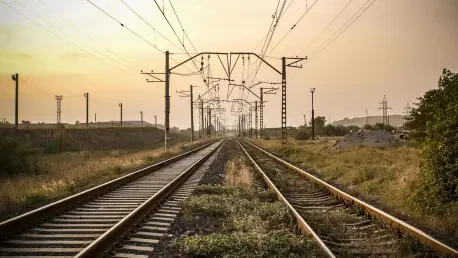How Finland and Europe are Reimagining Rail Connectivity
Can a single railway reshape Europe’s transportation narrative while boosting Finland’s momentum toward economic growth and regional security? The East Railway project is investing in this very possibility, creating a transformative path that integrates Finland into Europe’s network of railways, promising far-reaching effects for the continent.
Strategic Significance and Urgent Necessity
Finland occupies a critical position in Europe’s rail network, making the East Railway project more vital than ever for regional advancement. This initiative links Helsinki with expansive eastern regions and interconnects with essential European transport pathways like the Trans-European Transport Network (TEN-T). Through enhanced connectivity, Finland stands to gain in terms of economic competitiveness, environmental sustainability, and security measures, especially now that Finland is a NATO member. The project reflects a broader recognition that connectivity isn’t merely about travel—it’s about strategic positioning and future prosperity.
Unveiling the Project’s Blueprints
Delving into the specifics, the East Railway offers numerous benefits, from reduced transit times to improved trade routes. By introducing high-speed rail for the first time, Finland is positioned on par with its European neighbors, opening doors for robust economic growth. The route is meticulously planned to align with TEN-T corridors, establishing Finland as a crucial link in the European transportation chain. Moreover, the anticipated economic uplift stems not just from faster travel, but from the potential for thriving new commerce and prosperous regions along the rail line.
Expert Insights and Global Perspectives
Petteri Portaankorva from East Railway Ltd shared his visionary views at the Train & Rail conference in Stockholm. According to him, integrating Finland’s rail systems with international standards is more than a technical challenge—it is a game-changer in European military mobility and regional growth. His insights echo the findings of multiple studies highlighting the transformative power of rail connectivity, drawing parallels with countries that have undergone similar projects, such as Spain and China. Their experiences showcase robust trade increases and more efficient transit mechanisms achieved through strategic rail expansion.
Planning Pathways for Success Amid Challenges
Success involves meticulous strategic planning, including technological innovation and logistical efficiency. Overcoming potential obstacles like Finland’s unique rail gauge becomes a paramount concern, demanding tailored solutions for seamless integration with European systems. Funding remains another critical piece, with hopes for investment support from the European Union. The project fosters an environment where Finland and Europe stand united toward cohesion for the year 2040, leveraging rail infrastructure to strengthen regional ties. The collaboration promises to propel both Finland and Europe into a new era of connectivity and growth.
Moving Forward Toward an Integrated Future
By 2040, the East Railway project’s expected transformations and advancements have become a pivotal reality connecting Finland to greater Europe. The complex challenges of gauge compatibility and funding were addressed as Finland collaborated internationally and domestically. Also, the railway turned out to be a cornerstone for sustained economic vitality and regional focus, a testament to strategic foresight. Finnish stakeholders engaged in innovation and robust planning processes, resulting in connectivity realizing its full potential, boosting regional and global growth. The East Railway emerged as an enduring example of strategic infrastructure catalyzing mutual prosperity and security, showcasing Finland within a unified European vision.









